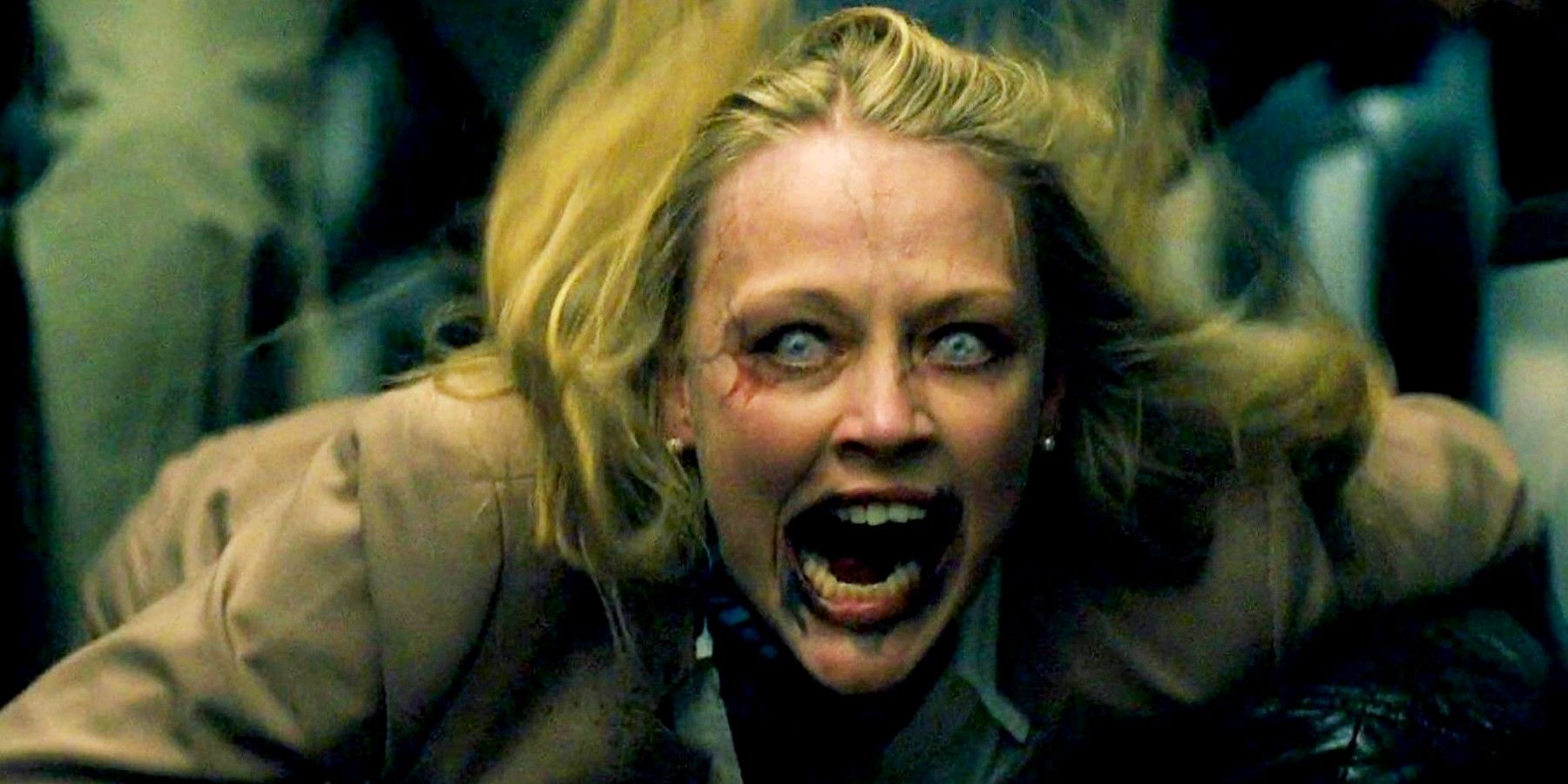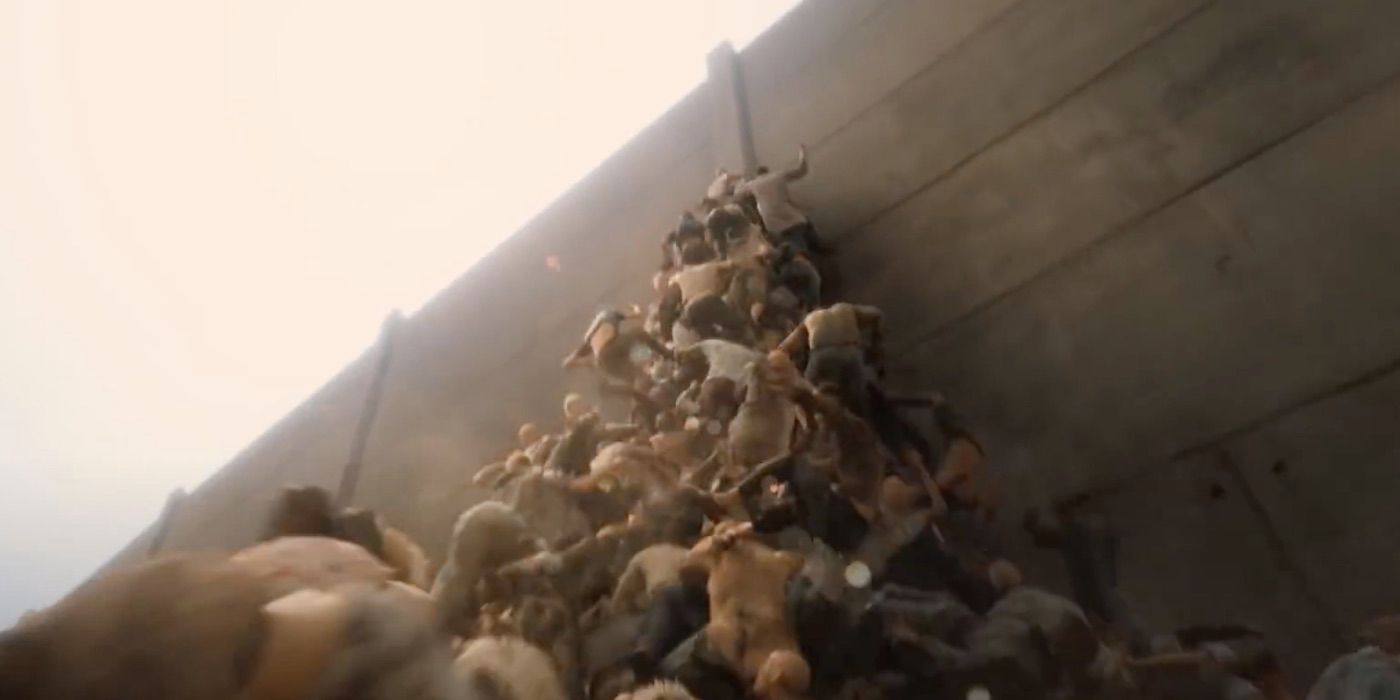VFX artists are breaking down World War Z's CGI zombies and discussing one noticeable mistake. Directed by Mark Forster, the film follows Gerry Lane and his family, who find themselves caught in the midst of a global pandemic when a virus begins turning humans into the living dead. Brad Pitt stars as Lane and is joined by a cast that includes Mireille Enos, James Badge Dale, Matthew Fox and more. Released back in 2013, the movie performed well at the box office and received mostly positive reactions, though some criticism surrounded its visual effects.
In Corridor Crew's latest video, VFX artists touched on a couple of the flaws in World War Z while looking at the CGI used. During one particular scene, in which zombies are climbing over a bus, they point out that there are two versions of the same person. Jordan Allen then explains that this can occur when creating "simulations" of many people. Read his comments regarding the World War Z CGI mistake below:
"The way that simulations work, at the base level, is you have your initial character models, and you convert them into what are called agents, and those agents are duplicated hundreds or thousands or tens of thousands of times to create these armies. And when you have so many thousands of people, you don't have so many thousands of models, right. You're gonna see duplicates."
Why CGI Was Used In World War Z
Some of the action in World War Z is unusual, with the zombies climbing and falling onto each other, and as Corridor Crew describe, that is where simulations would be used. Along with the bus scene in Jerusalem, another notable instance of CGI takes place when the zombies attack the protective wall, eventually getting within the city's perimeters. On the outside, World War Z's fast-paced zombies swarm the divider and create mounds of bodies.
When it comes to the physical appearance of the zombies, they are more practical, with dark veins and eyes that look almost glazed over. The CGI is most evident during the scenes that contain large quantities of them. Spreading the infection through bites, they tend to go after just about anyone, meaning action sequences are frequent, but those in Jerusalem seem to feature the most effects.
With disappointment over the CGI zombies and some of the movie's mistakes now being pointed out, a sequel could have been given a chance to improve in that area. Unfortunately, any plans for a World War Z 2 have reportedly been canceled. It makes sense to utilize motion capture and simulations, especially when depicting a massive number of zombies, but the final results of World War Z could have been better accomplished.
Source: Corridor Crew/YouTube


